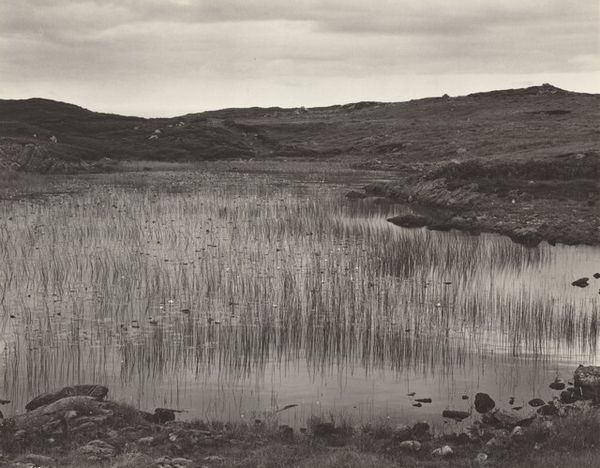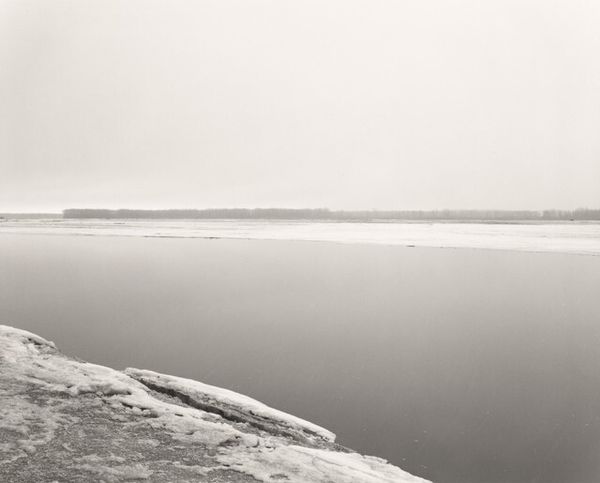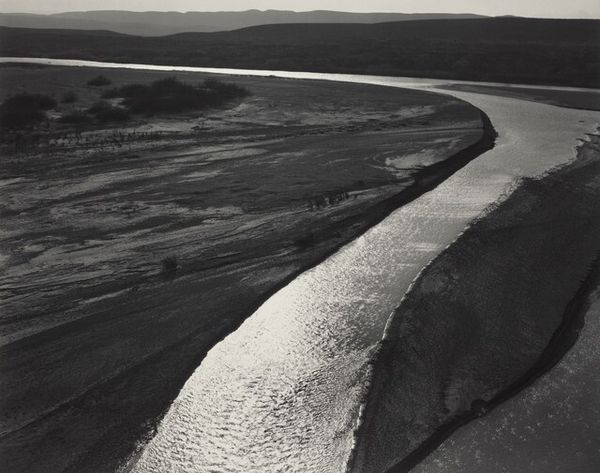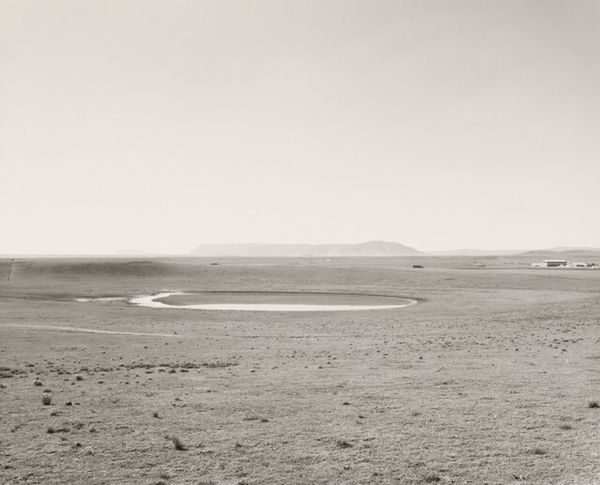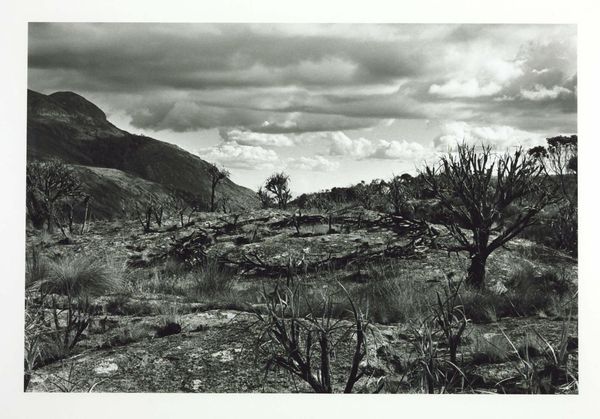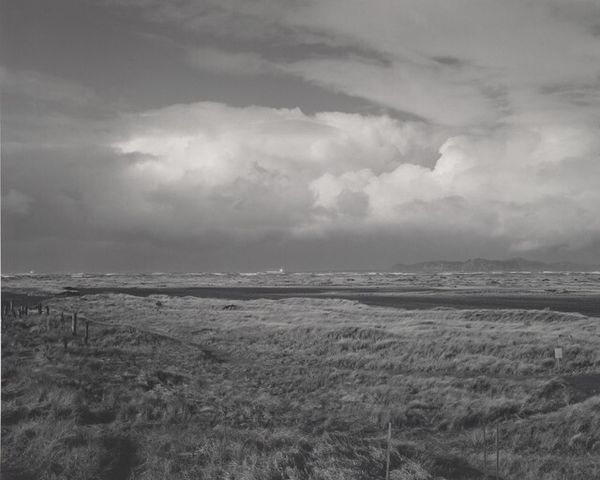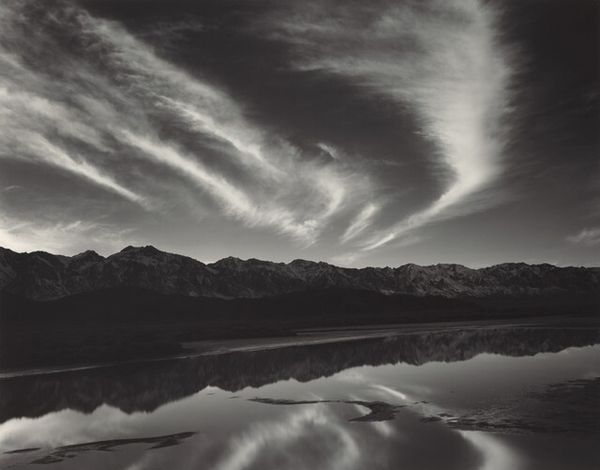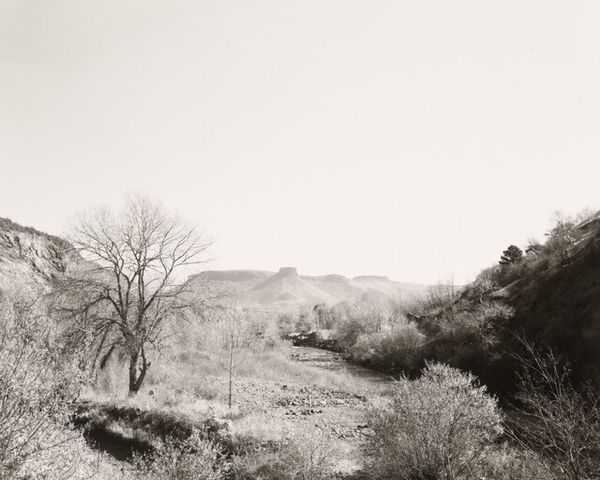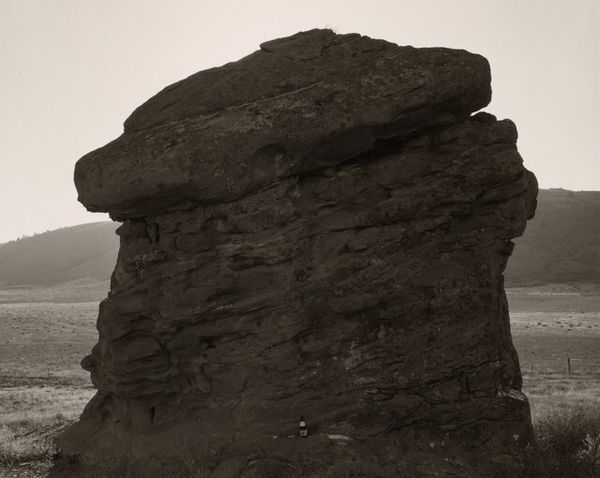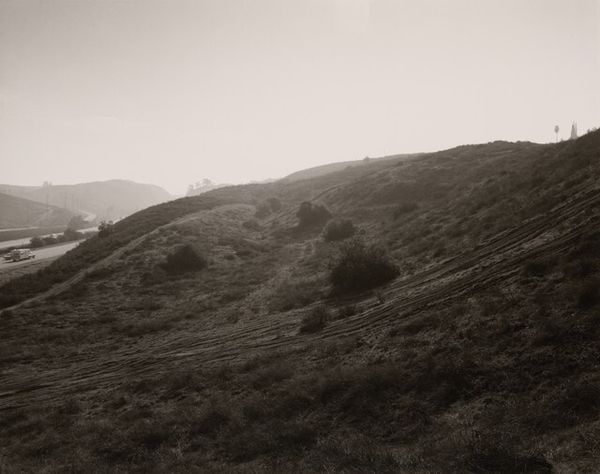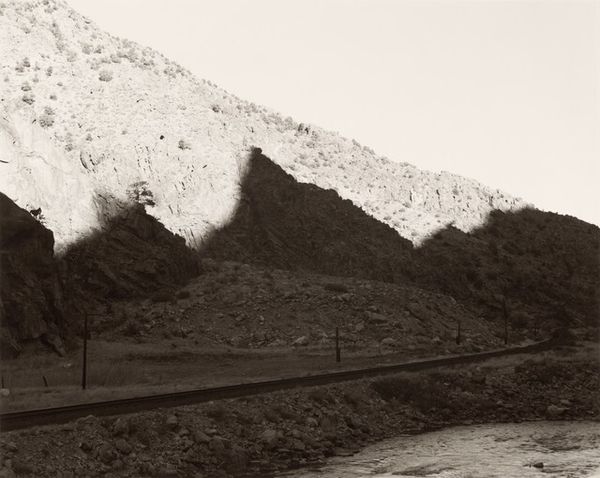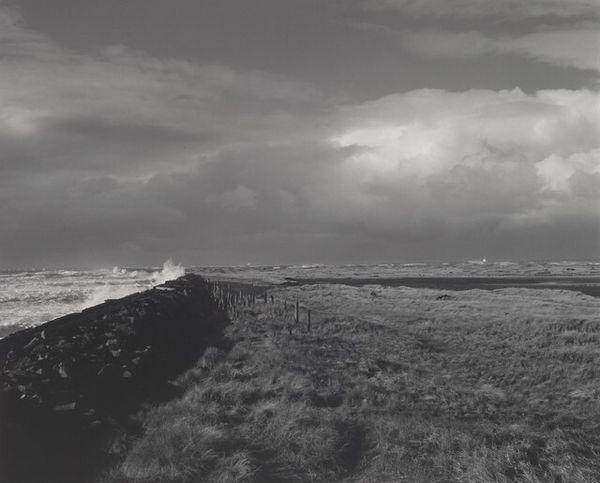
Bellvue Dome Near LaPorte, Colorado (Cache la Poudre River) Possibly 1996 - 2004
0:00
0:00
photography, gelatin-silver-print
#
landscape
#
nature
#
photography
#
gelatin-silver-print
#
monochrome photography
#
monochrome
Dimensions: image: 35 × 44.5 cm (13 3/4 × 17 1/2 in.) sheet: 40.3 × 50.5 cm (15 7/8 × 19 7/8 in.)
Copyright: National Gallery of Art: CC0 1.0
Curator: Let’s spend a few moments with William Wylie's photograph, "Bellvue Dome Near LaPorte, Colorado (Cache la Poudre River)." It's a gelatin-silver print, possibly made between 1996 and 2004. Editor: My first impression is one of stark quietude. The monochromatic palette lends it a timeless quality, almost geological. The heavy mountain, countered by that still, reflective water... it feels both solid and ethereal. Curator: Indeed. Wylie often engages with the American West, documenting landscapes shaped by both natural forces and human intervention. Consider the history of landscape photography, from exploration surveys to conservation efforts. This image participates in that dialogue, doesn't it? Editor: Absolutely. And focusing on the tangible, that gelatin-silver process is critical. The darkroom manipulation, the careful choice of paper… it transforms a captured moment into a crafted object. Each print is unique, bearing the marks of labor. The social context too – it's not just about aesthetic value, it is also about commodification. This print will eventually exist within art market economies. Curator: Good point. Looking at the composition, the near-absence of human presence feels significant, despite that implicit reference. This valley in Northern Colorado, like many landscapes, bears the marks of cattle ranching, water diversion for agriculture... even the photographic act itself is a form of intervention. Editor: Exactly. Think about the raw materials, the silver mined from the earth, processed and manufactured to create the light-sensitive emulsion that allows capture. Then there is the paper as product of the forestry industry... we need to unpack these hidden supply chains. Curator: So the image speaks softly, but invites reflection on these large environmental and industrial themes? Editor: Precisely. It encourages a consideration of landscape not merely as a vista, but as a locus of intense human-nature interaction, transformed through industrial production, commercial markets, and colonial-era ideologies. Curator: Seeing it through that lens deepens my appreciation for Wylie’s seemingly simple composition. Editor: And for me, it underscores the vital importance of critically examining art not as disembodied, but rather always inextricably entangled with systems of materials and political economy.
Comments
No comments
Be the first to comment and join the conversation on the ultimate creative platform.
